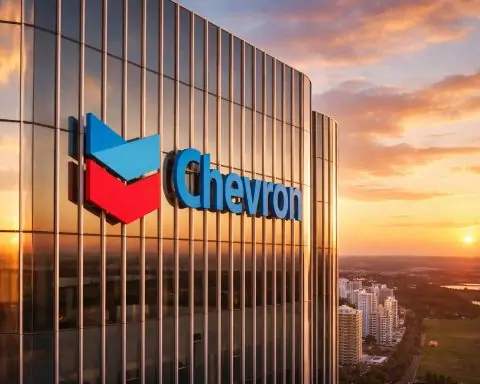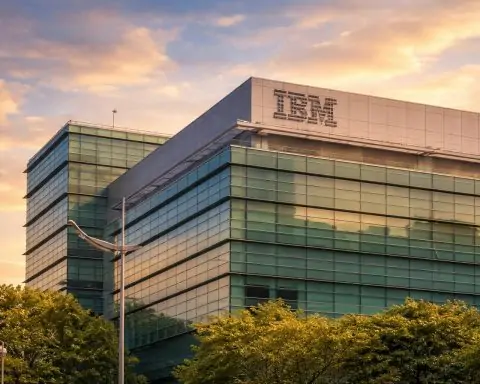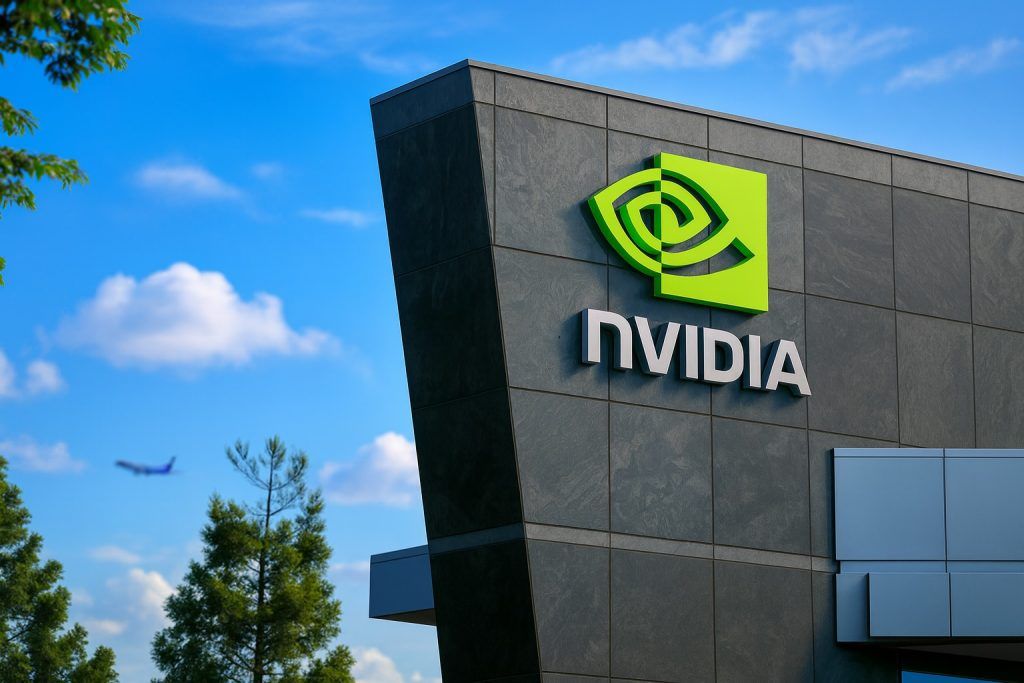Key Facts October 21, 2025
- TSLA near highs: Tesla stock traded around $445 per share on Oct. 21, just shy of its 52-week peak (~$453 on Oct. 6). Shares have seesawed recently – up ~5% one day, down ~1–2% the next – but remain up about 80% year-to-date, vastly outperforming the S&P 500’s ~17% gain [1].
- Record sales boost optimism: Tesla delivered 497,099 vehicles in Q3 2025, an all-time quarterly record and about +7.4% year-over-year [2]. This blew past Wall Street’s ~443,000 estimate, thanks largely to a late-September rush of U.S. buyers racing to beat an expiring $7,500 federal EV tax credit [3].
- Cheaper models, thinner margins: In early October Tesla launched new “Standard Range” versions of the Model 3 sedan (~$36,990) and Model Y SUV (~$39,990) – priced ~$5,000 lower by using smaller batteries and stripping features [4] [5]. CEO Elon Musk’s strategy: sacrifice short-term profit margins to drive higher sales volume [6]. Investors remain wary – TSLA stock fell ~4% after the Oct. 7 reveal of these budget models amid concerns about profit squeeze [7].
- Earnings on deck, profit under pressure: Tesla reports Q3 earnings on Oct. 22, and expectations are tempered. Analysts forecast ~5% revenue growth (≈$26.3 B) but a 24% drop in earnings per share to about $0.55 [8]. Price cuts and incentives have dented profit margins, and the phase-out of U.S. EV credits and plummeting regulatory credit sales are additional headwinds [9] [10]. Musk himself warned that “a few rough quarters” could follow the subsidy expiration [11].
- Wall Street split on TSLA: Expert opinion is sharply divided. Top Tesla bull Dan Ives of Wedbush just reiterated a $600 price target, citing strong demand and future AI/self-driving tech upside [12]. But BNP Paribas’s James Picariello initiated coverage at Sell with a $307 target, arguing the stock’s trillion-dollar valuation already reflects “optimism” for unproven robo-taxi and AI ventures [13]. Overall, consensus rating is Hold – roughly half of analysts now advise Hold or Sell – and the average price target ~ $365 implies about 18% downside from current levels [14].
- Future outlook and risks: Tesla faces a challenging road ahead. Competition is intensifying from rivals like China’s BYD and legacy automakers expanding their EV lineups, pressuring Tesla’s global market share [15]. U.S. safety regulators have also opened a new probe into Tesla’s Full Self-Driving system amid reports of cars running red lights and other issues [16]. Meanwhile, two major proxy firms (ISS and Glass Lewis) just urged shareholders to reject Musk’s proposed $1 trillion pay package, raising corporate governance concerns ahead of a Nov. 6 shareholder vote [17] [18]. Investors are eager for updates on upcoming products – from the long-delayed Cybertruck to a potential sub-$30K mass-market Tesla – which are seen as critical to sustaining growth in 2026 and beyond [19].
TSLA Rallies into Earnings – Near 52-Week Highs
Tesla’s stock has been on a tear heading into late October. Shares of the EV giant hovered in the mid-$440s on October 21, within a whisker of their 52-week high set earlier in the month [20]. The stock’s momentum reflects a mix of optimism and jitters: Tesla has dramatically outpaced the broader market this year (about +80% in 2025 vs. +17% for the S&P 500 [21]), yet recent sessions have seen volatile swings as traders brace for the company’s quarterly earnings report. A 5% surge one day followed by a sharp pullback the next has been typical of Tesla’s rollercoaster trading pattern, underscoring the market’s nervous excitement ahead of earnings. Analysts say this volatility shows investors are “on edge” – bullish about Tesla’s growth, but wary of any bad news that could snap the rally.
What’s driving the enthusiasm? In large part, Tesla’s record-breaking Q3 sales have given bulls justification to bid the stock higher. Earlier this month, Tesla revealed it delivered 497,099 vehicles worldwide in Q3, shattering its previous records and coming in well above consensus forecasts (~443k) [22]. Deliveries grew roughly 7.4% year-over-year – a remarkable feat for an automaker of Tesla’s scale – and signaled resilient demand. Much of this blowout was thanks to a last-minute sales rush in late September: U.S. customers raced to take delivery of Teslas before a popular $7,500 federal EV tax credit expired on Sept. 30, pulling forward a wave of purchases that otherwise might have occurred in Q4 [23]. Tesla aggressively promoted discounts and deals to capitalize on the expiring incentive, boosting Q3 numbers. While that pulled-forward demand juiced the latest quarter’s sales, it raises a question: did Tesla merely borrow sales from the future, potentially leaving a void in Q4? Executives have acknowledged this risk – Musk cautioned that with subsidies now gone, the company could face “a few rough quarters” as the market adjusts [24].
New “Standard” Models Trade Profit for Volume
To keep its growth streak alive, Tesla has been making bold moves on pricing. In early October, the company rolled out cheaper “Standard Range” versions of its two most popular models – the Model 3 sedan and Model Y SUV – with starting prices roughly $4,000–$5,000 lower than the prior base models [25]. The Standard Range Model 3 now lists around $36,990, and the Model Y around $39,990 [26]. How did Tesla trim the cost? By skimping on some features. These budget editions carry a smaller battery pack (offering shorter range), a less powerful motor, and come stripped of various amenities – even some basic conveniences were removed to save money [27]. Notably, Tesla disabled certain Autopilot functions (like “Autosteer”) on the base Model 3 and omitted features such as ventilated seats and premium trim in these cars [28] [29]. In short, buyers get a Tesla experience with a few bells and whistles missing, in exchange for a moderately lower price.
Musk’s bet is that these more affordable Teslas will significantly expand the company’s customer base, especially in markets like Europe and Asia where cheaper Chinese EVs are making inroads [30]. By trading a bit of margin on each vehicle for greater volume, Tesla hopes to boost overall earnings through scale. “Tesla’s intent is clear – trade short-term margin for long-term network scale,” says Shay Boloor, chief market strategist at Futurum Equities [31]. Early signs show the strategy is spurring additional orders, and it helps offset the loss of the U.S. tax credit that had been propping up domestic sales [32].
However, this approach comes with a cost to profitability. All those price cuts and incentives over the past year have squeezed Tesla’s once-enviable margins. The automotive gross margin (excluding regulatory credits) has slid from the lofty ~30% levels seen a couple years ago into the mid-to-low 20s, by some estimates [33]. Musk has been candid that Tesla is willing to tolerate “lower margins in the near term” in order to keep growing its fleet and fend off competitors. But some analysts worry Tesla may be overcorrecting on price. “The big question is, how much incremental demand is there at this point, given the staleness of their vehicle lineup?” asks Garrett Nelson of CFRA Research, pointing out that Tesla’s models haven’t had major refreshes in a while [34]. If most people who wanted a Tesla have already bought one, cutting prices further could simply erode profits without significantly growing the customer pool.
Indeed, investors reacted coolly to the Standard Range announcement. When Tesla unveiled the cheaper Model 3 and Y variants on Oct. 7, TSLA stock dropped about 4% that day [35]. The lukewarm reception suggests Wall Street is focused on margins as much as growth. Profitability will be a focal point in the upcoming earnings release – particularly vehicle gross margin and whether Tesla’s cost-cutting on these new models was enough to offset the lower sticker prices [36]. On Wednesday’s call, expect analysts to press Musk on how many buyers the Standard Range trims are attracting and whether they’re cannibalizing sales of the higher-end versions.
Q3 Earnings Preview: Modest Growth, Margin Squeeze
The timing of Tesla’s Q3 earnings (after market on Oct. 22) has the market on high alert. With the stock near highs, any earnings surprise – good or bad – could trigger a big move. Options traders are pricing in about a 7% swing in TSLA’s share price following the report [37], reflecting uncertainty over how the numbers will land. Here’s what Wall Street is expecting when Tesla opens its books:
Revenue is forecast around $26–26.5 billion for the quarter, which would be roughly 5–6% higher than a year ago [38]. That indicates continued top-line growth, albeit at a far slower pace than Tesla’s multi-year average. The record vehicle deliveries certainly boost revenue, but remember that average selling prices have come down due to the price cuts. Tesla has also been selling a higher mix of its cheaper models (Model 3 and Y) versus premium models (S/X), which can weigh on the revenue per vehicle. Additionally, the once-lucrative stream of regulatory credit sales (selling EV credits to rival automakers) is drying up – U.S. policy changes this year have largely ended that gravy train [39]. Last quarter, Tesla warned that credit revenue would shrink, and it may have largely disappeared by Q3 [40]. Losing high-margin credit sales is another factor making this quarter’s revenue growth look modest.
Earnings and margins are where the real pressure lies. Analysts project Tesla will report around $0.55 in earnings per share for Q3, down dramatically from $0.72 EPS a year ago (–24% YoY) [41]. In other words, profit is expected to drop despite higher sales. The culprit: thinner profit margins. Tesla has aggressively cut prices throughout 2023–2025 to stay ahead of rising competition and to stimulate demand amid higher interest rates, and those cuts are now biting into the bottom line [42]. Raw material and battery costs haven’t fallen enough to fully offset the cheaper vehicle prices. Wall Street will be laser-focused on Tesla’s automotive gross margin (ex-credit) metric. In Q2 it was 18.1% – a far cry from ~30% a year prior. Another decline in Q3 would confirm that the new Standard Range models and other discounts further eroded profitability.
Musk and CFO Vaibhav Taneja may urge patience, reiterating that this is a strategic trade-off. Tesla has said that expanding its fleet now (even at lower margin) will pay off later when it can monetize software upgrades, self-driving features, and its massive installed base (e.g. through robotaxi services or subscriptions). Still, investors will want to hear how soon margins might stabilize. Any hint of a rebound (say, through cost improvements or higher software revenue) could reassure the market. Conversely, if Tesla guides toward further margin deterioration or softens its outlook, the stock could be in for a reality check. Notably, Musk previously signaled that difficult market conditions – from the EV subsidy rollback in the U.S. to high borrowing rates – might make the next few quarters bumpy [43]. The Q3 report is Tesla’s chance to show it can navigate these challenges.
Also crucial will be management’s commentary on the order backlog and demand going into year-end. Were there signs of a slowdown once the U.S. tax credit expired in October? How are orders trending in China and Europe, where Tesla has cut prices multiple times to shore up sales? Any color on these questions will shape the market’s view of whether Tesla can hit its growth targets for 2025. With production of the futuristic Cybertruck pickup ramping up (first customer deliveries began this year) and talk of a $25K-$30K mass-market model in development, investors are eager for updates – but those products won’t significantly boost financials until 2026. In the meantime, Tesla has to get through what could be a growth plateau in the next couple of quarters.
Bulls vs. Bears: Analyst Sentiment Remains Split
Despite Tesla’s enormous gains this year, Wall Street is far from unanimous on TSLA’s future. In fact, the stock is one of the most polarizing among big caps, with forecasts ranging from sky-high to deeply pessimistic. Recent weeks saw a flurry of analyst updates, highlighting the divide:
On the bullish side, longtime Tesla champion Dan Ives of Wedbush Securities reaffirmed his optimism just days ago. Ives maintained an “Outperform” (Buy) rating and a $600 price target for TSLA [44]. That target is about 35% above the current stock price – implying Tesla’s market cap could surge well past $1.5 trillion. In a note, Ives praised Tesla’s robust deliveries (helped by steady China sales and that end-of-quarter U.S. order rush) and argued that we’re on the cusp of Tesla’s “next growth phase” driven by its advances in artificial intelligence and self-driving tech [45]. He believes initiatives like Tesla’s Dojo supercomputer and Full Self-Driving software could unlock $1 trillion of value over time as they mature [46]. In other words, the bull case is that Tesla is not just an automaker – it’s a tech platform company in EVs, AI, and robotics, with multiple new revenue streams ahead.
Not all are convinced. This month BNP Paribas analyst James Picariello initiated coverage of Tesla with an outright “Sell” rating and a $307 price target, roughly 30% below current levels [47]. Picariello’s skepticism centers on valuation: Tesla is priced around 100 times earnings, more like a fast-growing tech firm than a carmaker. The lofty valuation, he says, hinges on “optimism” around ventures like robotaxis, autonomous driving, and even humanoid robots – none of which meaningfully contribute to revenue yet [48]. “We see potential for AI-related upside over time, but much of that appears already priced in,” Picariello wrote, warning that Tesla’s $1 trillion market cap leaves little room for error. Similarly, other bears point to Tesla’s shrinking EV market share (as rivals catch up) and the possibility that Tesla might need to spend more on advertising or redesigns to spur demand. Some, like HSBC’s analyst, have issued price targets as low as $120–130 on worst-case assumptions [49] – implying the stock could plunge by over 70% if Tesla stumbles.
Most analysts fall somewhere between these extremes. According to a compilation of broker forecasts, the average 12-month price target for TSLA is around $360–$370 per share [50] [51]. That’s notably below where the stock trades now, indicating that many on Wall Street think Tesla’s recent rally may have gotten ahead of itself. Indeed, Tesla currently has a consensus “Hold” rating [52]. Out of 40+ analysts tracked, roughly 15 rate it a Buy, 13 say Hold, and 10 recommend Sell [53]. This lukewarm consensus reflects both Tesla’s immense promise and the acknowledgement of risks. Bulls concede that near-term earnings will be under pressure, while bears concede that Tesla has defied skeptics before. Any earnings surprises or big announcements (say, on new products or production milestones) could prompt analysts to revise their targets – and the split verdict means Tesla’s stock could be volatile as each new datapoint causes bulls or bears to recalibrate.
Challenges on the Road Ahead
Beyond the quarterly numbers, Tesla faces a landscape of opportunities and threats that will shape its trajectory moving forward. Investors and analysts are watching several key areas:
Competitive Pressure: Tesla’s dominance in the EV arena is being tested as never before. In China – the world’s largest EV market – domestic contenders like BYD, Nio, and others are chipping away at Tesla’s share by offering lower-priced models and a constant stream of new releases. In the U.S. and Europe, traditional automakers (GM, Ford, Volkswagen, etc.) have rolled out dozens of new electric models, from affordable crossovers to luxury SUVs, aiming directly at Tesla’s lineup. The impact is evident: In Europe, Tesla’s sales reportedly fell ~22% in August, shrinking Tesla’s EV market share there to only ~1.5% [54]. Tesla has responded by cutting prices (as discussed) and leveraging its scale advantages (it still has higher profit per vehicle than most peers). But the EV price war has begun to bite industry-wide – several rivals have warned of lower margins, and Tesla itself is not immune. How Tesla balances growth vs. profit in the face of rising competition will be a central theme for investors. The company’s ability to innovate and refresh its lineup (e.g., new models or redesigns) will also be critical to stay ahead of the pack.
Regulatory and Legal Scrutiny: Tesla’s tech-forward approach, especially with its Autopilot and Full Self-Driving (FSD) features, continues to draw scrutiny from regulators. In early October, U.S. safety authorities opened a formal investigation into reports that Tesla’s FSD software can sometimes ignore traffic controls – running red lights or going the wrong way – resulting in dangerous situations [55]. This probe covers an estimated 2.9 million Tesla vehicles and was prompted by dozens of incidents, including 14 crashes and 23 injuries allegedly linked to FSD malfunctions [56]. The news of the investigation (announced Oct. 9) caused a brief 2% dip in Tesla’s stock as investors grappled with potential implications [57]. Regulators could mandate recalls or software updates, or even impose fines if Tesla is found to have overlooked safety issues. Tesla, for its part, just released a major FSD software update (v11) aimed at improving behavior at intersections and other scenarios. Safety issues are a reputational risk for Tesla – any high-profile accidents or findings of negligence could dampen consumer confidence and invite stricter oversight. Additionally, Tesla must navigate evolving environmental regulations and subsidy policies in each of its markets, which can affect sales (as seen with the U.S. tax credit changes).
Elon Musk’s Leadership and Focus: Tesla’s CEO remains a wildcard factor. Elon Musk’s visionary zeal has been fundamental to Tesla’s success, but his actions often attract controversy. Just in the past month, Tesla’s board proposed a new $1 trillion pay package for Musk – a potentially record-shattering compensation plan meant to incentivize him through perhaps 2030. This sparked backlash from governance experts: Both leading proxy advisory firms, ISS and Glass Lewis, have urged Tesla shareholders to vote “NO” on Musk’s pay proposal, calling it excessive and raising concerns about its structure [58] [59]. The pushback puts Musk and Tesla’s board under pressure ahead of a November 6 shareholder meeting to approve the plan. While Tesla argues Musk’s leadership has delivered extraordinary results (and that the pay is tied to extremely ambitious targets), some investors worry that such a massive reward could be distracting or controversial, especially after a $56 billion stock award in 2018 was voided by a court. Musk’s attention is also divided among multiple ventures (SpaceX, his social media company X/Twitter, AI projects, etc.), and critics wonder if he can juggle it all. Thus far, Tesla has continued to execute, but Musk’s multitasking and sometimes polarizing public persona (from political tweets to abrupt decision-making) add an element of headline risk to the stock. For instance, Musk’s foray into politics and outspoken commentary have alienated some buyers – Reuters notes a “consumer backlash against Musk’s far-right political views” as one factor in Tesla’s demand dynamics [60]. Investors will be listening on the earnings call for Musk’s tone: Is he laser-focused on Tesla’s challenges, or does he diverge into tangents? His comments on pricing strategy, new products, or the economy could sway market sentiment.
Future Products and Growth Plans: Despite near-term headwinds, Tesla’s long-term story still centers on innovation. Shareholders are eagerly awaiting the commercial launch of the Cybertruck, Tesla’s radical electric pickup. After years of delays, the first handful of Cybertrucks have been delivered, and Musk promises a production ramp is underway. If Tesla can successfully scale Cybertruck production in 2024, it opens up a large new market segment (pickup trucks) where Tesla until now had no presence. Furthermore, Tesla has teased development of a truly affordable model (sometimes dubbed the “Model 2” by fans) that could start around $25,000–$30,000. Musk confirmed that Tesla built the first prototype units of this budget EV in mid-2025, essentially a pared-down Model Y, and hopes to begin volume production in late 2025 [61] [62]. Such a car could be a game-changer for expanding Tesla’s customer base – potentially driving millions in additional annual sales – though it might also cannibalize some sales of the higher-priced models [63]. On the energy side, Tesla continues to grow its battery storage and solar energy business, which, while smaller than auto, provides diversification. All these initiatives feed the long-term bull thesis: that Tesla is still in the early chapters of a much larger growth story spanning autos, energy, and tech. But they also come with execution risks (e.g. the Cybertruck’s stainless steel design has been “enormously difficult” to manufacture, Musk admitted [64]). How Tesla manages these launches and capital projects will greatly influence its future financial performance.
Outlook: Cautious Optimism Amid Uncertainty
As of late October 2025, Tesla finds itself at a crossroads. The company is achieving record sales and expanding its lineup at a breakneck pace, yet its stock valuation leaves little room for missteps. In the coming days, all eyes are on the Q3 earnings: Investors want to see evidence that Tesla can maintain growth without completely sacrificing profitability. Any guidance on Q4 and 2026 will be equally pivotal, given the recent tax credit expiration and economic headwinds.
Most analysts expect Tesla will navigate through a challenging period of tighter margins and intense competition, then emerge stronger with new vehicles and technologies fueling reaccelerated growth. However, it’s far from guaranteed. Execution is key – from ramping the Cybertruck, to hitting cost targets on that $30K model, to continuing improvements in FSD software, Tesla has a full plate. There are also macro factors to watch: higher interest rates have made auto loans more expensive, potentially dampening car demand, and global economic uncertainties persist.
For now, sentiment around TSLA stock is a mix of excitement and caution. The bulls are banking on Musk to surprise to the upside, as Tesla has done in the past. The bears see a company priced for perfection stepping into a more uncertain phase. Short-term traders should brace for volatility around the earnings report and any major announcements. Long-term investors, on the other hand, will be parsing Tesla’s results and commentary for clues about its sustainable growth rate and competitive moat in an increasingly crowded EV market.
In summary, Tesla is making headlines on all fronts – record-breaking sales, bold pricing moves, controversial leadership decisions, and game-changing technologies. That makes for a thrilling story, but also a complex investment case. After the dust settles on the earnings news and shareholder votes, the core question remains: Can Tesla continue to justify its enormous valuation by delivering equally enormous growth and profits in the years ahead? The next few days – and quarters – should provide a much clearer answer.
Sources: Tesla and analyst reports via Reuters [65] [66], TipRanks [67] [68], ts2.tech TechStock² [69] [70], and other financial news as of Oct. 21, 2025.
References
1. ts2.tech, 2. ts2.tech, 3. ts2.tech, 4. www.reuters.com, 5. ts2.tech, 6. www.reuters.com, 7. ts2.tech, 8. www.tipranks.com, 9. www.reuters.com, 10. www.reuters.com, 11. ts2.tech, 12. www.tipranks.com, 13. www.tipranks.com, 14. www.tipranks.com, 15. ts2.tech, 16. ts2.tech, 17. www.reuters.com, 18. www.reuters.com, 19. ts2.tech, 20. ts2.tech, 21. ts2.tech, 22. ts2.tech, 23. ts2.tech, 24. ts2.tech, 25. www.reuters.com, 26. ts2.tech, 27. www.reuters.com, 28. ts2.tech, 29. www.reuters.com, 30. www.reuters.com, 31. www.reuters.com, 32. www.reuters.com, 33. www.reuters.com, 34. www.reuters.com, 35. ts2.tech, 36. www.reuters.com, 37. www.tipranks.com, 38. www.tipranks.com, 39. www.reuters.com, 40. www.reuters.com, 41. www.tipranks.com, 42. www.reuters.com, 43. ts2.tech, 44. www.gurufocus.com, 45. www.tipranks.com, 46. www.tipranks.com, 47. www.tipranks.com, 48. www.tipranks.com, 49. ts2.tech, 50. www.tipranks.com, 51. www.gurufocus.com, 52. www.tipranks.com, 53. www.tipranks.com, 54. ts2.tech, 55. ts2.tech, 56. ts2.tech, 57. ts2.tech, 58. www.reuters.com, 59. www.reuters.com, 60. www.reuters.com, 61. ts2.tech, 62. ts2.tech, 63. ts2.tech, 64. ts2.tech, 65. www.reuters.com, 66. www.reuters.com, 67. www.tipranks.com, 68. www.tipranks.com, 69. ts2.tech, 70. ts2.tech







